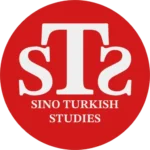This intensive winter program combines crash courses, mini-courses, and plenary lectures delivered by leading experts in the field. Participants will have the opportunity to deepen their understanding of rectifiability, engage with established scholars, and explore recent advances in geometric measure theory. The school particularly welcomes graduate and PhD students with strong interests in measure theory, rectifiability, harmonic analysis, and related areas.
The program is co-organized by Thierry De Pauw (ITS), Siran Li (Shanghai Jiao Tong University), and Hervé Pajot (Université Grenoble Alpes).
Overview
The study of rectifiability and pure unrectifiability dates back to the early twentieth century, initiated by A. S. Besicovitch and collaborators exploring the geometry of Hausdorff measures in the Euclidean plane. These foundational ideas were later extended to higher dimensions and applied to the calculus of variations.
A central milestone is Besicovitch’s projection theorem, which describes the geometric discrepancy between rectifiable and fractal sets. The theorem was generalized by Federer, who used it with Fleming to establish the compactness of integral currents.
In recent years, the Besicovitch–Federer projection theorem has attracted renewed attention through contributions such as David Bate’s work in metric spaces and Damian Dabrowski’s quantitative version in the Euclidean plane. In his mini-course, Dabrowski will trace the historical development of this problem and present new analytical tools to estimate the size of projection sets that approximate purely unrectifiable sets. This research connects directly to the Vitushkin Conjecture, which states that if a set E is removable for bounded complex analytic functions, then its Favard length—the average length of its orthogonal projections—is zero.
For sets with finite one-dimensional Hausdorff measure, this conjecture was proved by Guy David, building on earlier work by Christ, Jones, Mattila, Melnikov, and Verdera, using methods from uniform rectifiability and harmonic analysis. The conjecture has since been extended to σ-finite cases by Xavier Tolsa.
Uniform Rectifiability and Harmonic Analysis
Uniform rectifiability, introduced in the early 1990s, provides a quantitative refinement of rectifiability and plays a fundamental role in the study of singular integral operators on irregular sets.
In his lectures, Guy David will give a structured introduction to this concept, including examples of corona decompositions, a versatile analytical tool with far-reaching applications.
In parallel, Xavier Tolsa’s mini-course will explore the connection between Riesz transforms and rectifiability, highlighting results that characterize measures μ with an L²(μ)-bounded Riesz transform in terms of β² coefficients—a key parameter describing geometric flatness. These insights are instrumental in understanding removable singularities of Lipschitz harmonic functions and free boundary problems involving harmonic measure.
Harmonic Maps and Singular Sets
The regularity theory of harmonic maps is a central topic in geometric analysis and nonlinear PDEs. Decades of research have produced a nuanced understanding of singularities:
- Weakly harmonic maps can be everywhere discontinuous (Rivière);
- Stationary harmonic maps are smooth away from a set of codimension 2 (Bethuel, Evans);
- Minimizing harmonic maps are smooth away from a set of codimension 3 (Schoen–Uhlenbeck).
The modern framework, established by Naber and Valtorta, provides quantitative control on these singular sets, showing that their top-dimensional strata possess uniformly locally finite Hausdorff measure.
In his lectures, Changyou Wang will present:
- The partial regularity theory of minimizing and stationary harmonic maps (Hélein, Evans, Bethuel);
- The rectifiability and defect measure structure of singular sets (Lin, Naber, Valtorta);
- The singular set behavior in Chen–Struwe’s heat flow of harmonic maps.
Quantitative Stratification and Reifenberg Theory
Following the breakthroughs of Naber–Valtorta, a variety of new analytical techniques have emerged, including:
- Quantitative stratification (Cheeger–Naber),
- Rectifiable and discrete Reifenberg theorems, and
- Energy covering and neck analysis methods.
Daniele Valtorta’s mini-course will examine rectifiable versions of Reifenberg-type conditions, emphasizing Dini summability of Jones’ β-numbers and calibration methods—powerful tools for quantitative geometric analysis.
Differentiability of Lipschitz Functions
Rademacher’s theorem states that a real-valued Lipschitz function on Euclidean space is differentiable almost everywhere, i.e., the set of non-differentiable points is Lebesgue-null.
However, the converse is subtle: in one dimension, every Lebesgue-null set lies within the non-differentiability set of some Lipschitz function; yet in higher dimensions, Preiss’s theorem shows there exist null sets in the plane that still contain differentiability points of every Lipschitz function.
Olga Maleva’s mini-course will link the differentiability of typical Lipschitz functions with the structure of purely unrectifiable sets, demonstrating how such sets can be represented as countable unions of closed purely unrectifiable subsets.
Application Information
This program is open to graduate and PhD students in mathematics (Bachelor’s degree required, Master’s preferred) with a strong background in:
- Rectifiability and unrectifiable sets
- Measure theory
- Harmonic analysis
Required Application Materials
- Curriculum Vitae (CV) in English
- Academic transcripts
- Motivation letter explaining your interest and how this school aligns with your research
- Contact email of at least one referee (for potential recommendation)
- Proof of English proficiency (IELTS, TOEFL, or equivalent evidence)
- Relevant scientific works or publications
Submission Links
Student Registration:
👉 https://www.wjx.cn/vm/O6i8Bjk.aspx#
Faculty Registration:
👉 https://www.wjx.cn/vm/PK9L4lq.aspx#
Important Dates
- Application Deadline: October 24, 2025, 17:00 (CST)
- Recommendation Letter Deadline: November 7, 2025, 17:00 (CST)
(Referees will be contacted after October 24.) - Notification of Acceptance: Mid–Late November 2025
- Winter School Dates: February 1–6, 2026
Source: Westlake University Official WeChat
Abroad Africa AI Beijing Belt & Road BLCU BRICS China chinese CPC CSC Culture Economy education EU Guizhou Kültür Langauge movie Multipolarity Russia scholarship science Shanghai Sino Sino Turkish Sino Turkish Sino Turkish Sino Turkish Sino Turkish Studies Sino Turkish Studies Sino Turkish Studies Sino Turkish Studies space Syria Taiwan Tariff trump Turkiye Türkiye University USA Xinjiang ZJUT Çin





